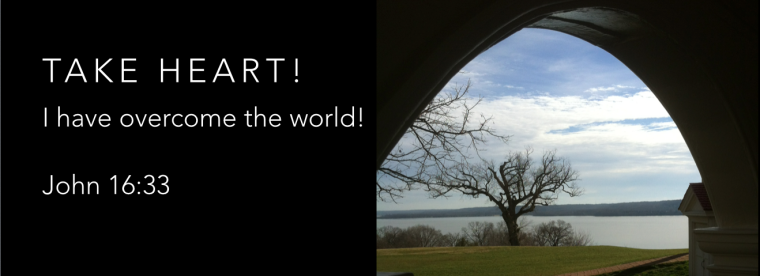How Shall We Praise God
Desiderius Erasmus of Rotterdam (October 28, 1466 – July 12, 1536) was a Dutch Renaissance humanist and a Catholic priest and theologian. He once wrote:
“We have brought into our churches certain operatic and theatrical music; such a confused, disorderly chattering of some words as I hardly think was ever in any of the Grecian or Roman theatres. The church rings with the noise of trumpets, pipes, and dulcimers; and human voices strive to bear their part with them. Men run to church as to a theatre, to have their ears tickled. And for this end, organ makers are hired with great salaries, and a company of boys, who waste all their time learning these whining tones.” (Erasmus, Commentary on I Cor. 14:19)
Or this from St. Augustine 354 A.D., describing the worship style at Alexandria under St. Athanasius:
“The pipe, tambourine, and harp here associate so intimately with the sensual heathen cults, as well as with the wild revelries and shameless performances of the degenerate theater and circus, it is easy to understand the prejudices against their use in the worship.”
The issue of musical style and instrumentation has been debated by leaders and members of the Church since its inception. Should the Church embrace the use of modern instruments and styles of music in order to reach lost demographics of people? Can the Church go too far in accommodating to culture that it loses its identity as the Church? Many lament the absence of younger generations in church but are reticent to engage with new forms of music and liturgical style which might reach them. Others lament the loss of our traditional heritage of hymns, choirs and organ music to rock bands and video screens.
Certainly, the traditions of our Church, particularly the Anglican heritage of traditional choral-led worship offers a treasure trove of music and worship practices which transport the worshiper to the throne room of the Lord in the heavenly places. Yet, should we be concerned when our children and teens are not finding their souls nurtured because of their personal distaste for older hymns and the sound of an organ over electric guitars and drums?

Mr. Randy Krum, Organist and Choirmaster of St. Peter’s Church in Lake Mary, FL
St. Peter’s has made a serious commitment to offer both traditional and contemporary forms of worship. The reality is that we have different types of people whose souls are fed by different forms of worship. Right now our contemporary service is the higher attended of the three services, but we have about equal numbers of people between the two forms of worship when you combine the attendance at 5 and 9:00, which are both more traditional in style and format. Our praise band led by the gifted and inspired, Rev. Wes Sharp, has set a high standard for contemporary Christian music expression within the Anglican tradition. With Randy Krum as Organ/Choir Director, we have placed a renewed emphasis on providing resources to the traditional 5:00 and 9:00 service. Our choir has been strengthened with more members and the traditional forms of worship enhanced. Randy has brought a wealth of experience and skill in leading musical worship in the Episcopal/Anglican tradition. And, we have a beautiful Allen organ to lift the roof in our church with beautiful music.
Admittedly, it has been real challenge to do both traditional and contemporary forms with God glorifing excellence, but God is worthy of our best efforts to praise him in every way. The sacred music of our Church’s tradition is something that I personally would never want to jettison, and so long as I am rector of St. Peter’s, it will always have a prominent place within the life of our congregation.
That said, one thing we should always bear in mind is that all of the forms which we consider traditional were at one time contemporary novelties for the Church. The first and main use of the organ as an instrument was at Roman gladiator matches in the arena. It was a very prominent instrument in the Greco-Roman culture. The church use of the organ was not until the tenth century and had to overcome its suspicion of the organ’s popularity in contemporary culture and more specifically its association with the Roman arena. It was a popular instrument at the time and an attractive novelty for the church–it brought people to church!
Consider that it is a traditional Anglican “thing to do” to put the message of the Gospel and Worship into the language of the people in order to reach the lost. The translation of the hymns, the Scriptures and the Prayer book into English from Latin was a fiercely debated monumental change in liturgical and worship practice to reach the demographic of those who speak English as their primary language. Contemporary translations opened up the gospel and worship of the Lord to the general population in a way that started a massive revival in Europe called the Protestant Reformation.

St. Peter’s Adult and Youth Choirs
Many of the “traditional” hymns that we now sing were actually written during this time. Luther’s famous hymn “A Mighty Fortress is Our God” was musically set to a popular German bar tune! Many more of our traditional hymns were written during the Great Awakening during the founding of the United States, by revivalists such as Charles Wesley. In their day they were new! The missionary methods of the Wesley brothers with their emphasis on large revival meetings and small groups were often criticized for being too accommodating to culture and not in keeping with the traditional way of forming Christians. Anglican priest, George Whitfield, often had to preach outside because the traditional church would not welcome his populist messages and styles.
One thousand years earlier, St. Patrick was an effective evangelist because he found aspects of the Irish culture that could be used by Christianity and translated the gospel into those forms. He was put on trial by the Roman Church leadership because his evangelism to the Irish “Barbarians” did not conform to the “Roman Way”. His monks didn’t wear the right robes, they didn’t cut their hair in the right way! We must never compromise with our culture in the area of morals and doctrine of the Church! We do not change our sexual ethics, or teaching on the nature of marriage to make it more expansive to our permissive culture. We do not water down our commitment to preach Jesus as the Lord of all and the only way to the Father, even if such a message is unpopular.
The challenge to be in the world and not of the world is always before us. If we completely reject the surrounding culture, we can create a monastic existence where we are neither in nor of the world—so heavenly minded, we are no earthly good. What does Paul mean when he says, “I have become all things to all men so that by all possible means I might save some. I do all this for the sake of the gospel, that I may share in its blessings..”? (1 Cor. 9:22) If we can use the contemporary Christian music that plays on the radio to reach the teens and non-Christians in this community more effectively than by not, is it not incumbent upon us to do so?
Certainly part of the formation of the young and new Christian would be to learn to appreciate and even fall in love with the larger tradition and worship expressions of the Church. Likewise, the formation of the older and traditional Christian would include learning to appreciate the new forms of expressing praise to God and perhaps grow to enjoy it! I hope that we will all recognize that the main goal in all of our efforts is to glorify and delight in the God who gave us voice and creativity to express our praises in various forms and expressions. In everything we do, our aim is to bring Glory to God the Father, Son and Holy Spirit, as it was in the beginning, is now and will be forever. Only God is the unchangeable One!
What do you think? Add your thoughts to the discussion here!



